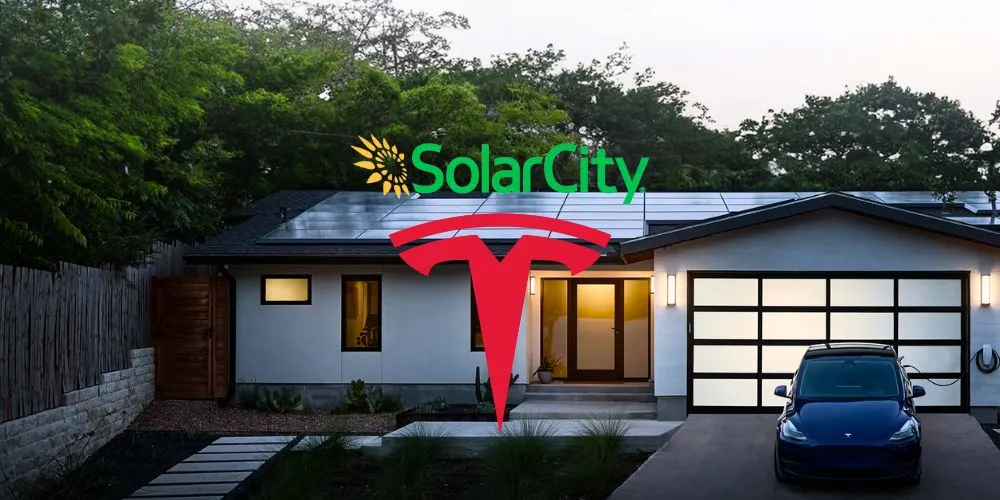The acquisition of SolarCity by Tesla in 2016 marked a significant turning point in the renewable energy sector. By integrating solar energy solutions with electric vehicles, Tesla aimed to create a comprehensive ecosystem that promotes sustainable energy consumption. This case study explores SolarCity’s background, the rationale behind the acquisition, the challenges faced, and the broader implications for the solar energy market and Tesla’s vision for a sustainable future.
Background of SolarCity
Founded in 2006 by Lyndon and Peter Rive, SolarCity quickly became one of the largest solar energy service providers in the United States.
The Rise of SolarCity
SolarCity emerged when the demand for renewable energy was on the rise.
- Innovative Business Model: SolarCity introduced a unique business model focused on providing solar energy solutions to residential and commercial customers. By offering solar leases and power purchase agreements (PPAs), the company enabled customers to install solar panels with little or no upfront costs, making solar energy more accessible.
- Market Expansion: As awareness of climate change and renewable energy grew, SolarCity expanded rapidly across the United States, capturing significant market share. By 2016, the company had installed more than 1.5 gigawatts (GW) of solar energy capacity, solidifying its position as a leader in the solar industry.
Tesla’s Vision for Sustainable Energy
Tesla, founded in 2003 by Elon Musk, focused on accelerating the world’s transition to sustainable energy through electric vehicles and renewable energy solutions.
- Product Integration: Tesla aimed to integrate various aspects of sustainable energy, including electric vehicles, solar power, and energy storage. The company’s mission aligned closely with SolarCity’s goals, making the acquisition a strategic move to enhance Tesla’s product offerings.
- Energy Storage Solutions: Tesla has already developed energy storage products, such as the Powerwall and Powerpack, designed to store energy generated from renewable sources. Integrating SolarCity’s solar products with Tesla’s energy storage solutions presented an opportunity to create a holistic energy ecosystem.
The Acquisition Process
In June 2016, Tesla announced its intention to acquire SolarCity for approximately $2.6 billion, which generated significant attention and debate within the business and investment communities.
Rationale Behind the Acquisition
The acquisition of SolarCity was motivated by several key factors.
- Vertical Integration: By acquiring SolarCity, Tesla aimed to vertically integrate its energy products vertically, allowing a seamless customer experience from solar generation to energy storage and electric vehicle charging. This integration could lower costs and increase efficiency in delivering sustainable energy solutions.
- Market Expansion: The acquisition allowed Tesla to expand its presence in the solar market and leverage SolarCity’s established customer base. With a combined focus on electric vehicles and solar energy, Tesla sought to create a comprehensive offering that could address various consumer needs.
- Accelerating Growth: Tesla’s acquisition of SolarCity aimed to accelerate growth in the renewable energy sector. By combining resources and expertise, the two companies could drive innovation and increase the adoption of solar energy technologies.
Controversy Surrounding the Acquisition
Despite the potential benefits, the acquisition faced significant scrutiny and controversy.
- Conflicts of Interest: Critics raised concerns about potential conflicts of interest, as Elon Musk was both the CEO of Tesla and the chairman of SolarCity. Detractors argued that the acquisition could be seen as a bailout for SolarCity, facing financial challenges at the time.
- Financial Performance: SolarCity had accumulated significant debt leading up to the acquisition, raising concerns about the deal’s economic viability. Some investors questioned whether Tesla could successfully absorb SolarCity’s debt and turn the business around.
Challenges Post-Acquisition
Following the acquisition, Tesla faced several challenges in integrating SolarCity into its operations and achieving its ambitious goals in the solar energy sector.
Integration Difficulties
The integration of SolarCity into Tesla’s operations proved more complex than anticipated.
- Cultural Differences: Tesla and SolarCity had different corporate cultures, which created challenges in aligning teams and processes. Tesla’s fast-paced, innovation-driven environment clashed with SolarCity’s more traditional approach to business, leading to operational difficulties.
- Operational Inefficiencies: The integration process impacted customer service and project delivery timelines. Many SolarCity customers reported installation delays and issues, leading to frustration and negative feedback.
Financial Performance
The financial performance of SolarCity post-acquisition raised concerns among investors and analysts.
- Increased Debt Load: Tesla took on SolarCity’s existing debt, significantly improving the company’s overall debt levels. This financial burden raised alarms about Tesla’s ability to maintain profitability while investing in its core electric vehicle business.
- Stock Price Volatility: The acquisition and subsequent challenges contributed to Tesla’s stock price volatility. Investors remained cautious about the company’s ability to successfully integrate SolarCity and achieve its long-term growth objectives in the solar market.
Strategic Developments
Despite the challenges faced after the acquisition, Tesla pursued several strategic initiatives to enhance its solar energy offerings and drive growth in the renewable energy sector.
Product Innovation
Tesla continued to innovate its solar products to improve efficiency and customer appeal.
- Solar Roof: One of Tesla’s flagship products post-acquisition was the Solar Roof, which aimed to integrate solar energy generation seamlessly into building materials. The Solar Roof offered an aesthetically pleasing alternative to traditional solar panels, appealing to homeowners looking for innovative energy solutions.
- Enhanced Energy Storage: Tesla further developed its energy storage solutions, including the Powerwall and Powerpack, to complement its solar offerings. These products allowed customers to store excess solar energy during peak demand or power outages, enhancing the value proposition of solar energy systems.
Marketing and Branding Efforts
Tesla leveraged its brand recognition to promote solar energy solutions effectively.
- Synergies with Electric Vehicles: Tesla’s marketing strategy emphasized the synergy between electric vehicles and solar energy, positioning its products as part of a broader sustainable energy lifestyle. This approach aimed to appeal to environmentally conscious consumers who sought integrated solutions.
- Increased Awareness: Through marketing campaigns and public appearances, Elon Musk raised awareness about the importance of renewable energy and the role of solar power in achieving a sustainable future. This advocacy contributed to a growing interest in solar energy technologies among consumers.
Regulatory and Market Dynamics
The solar energy market underwent significant changes following SolarCity’s acquisition, influenced by regulatory developments and shifting consumer preferences.
Regulatory Environment
The regulatory environment for solar energy continued to evolve, impacting the landscape for solar companies.
- Incentives and Subsidies: Government incentives and subsidies played a crucial role in promoting the adoption of solar energy. Policies such as the federal investment tax credit (ITC) provided financial support for solar installations, making them more attractive to consumers.
- Net Metering Policies: Net metering policies allowed solar customers to receive credits for excess energy produced by their solar systems, further incentivizing solar adoption. Changes in net metering regulations in various states impacted the financial viability of solar installations, prompting companies like Tesla to adapt their business strategies.
Market Competition
The solar energy market became increasingly competitive following the acquisition of SolarCity.
- Emergence of New Players: As the demand for solar energy solutions grew, new players entered the market, intensifying competition. Established energy companies and startups sought to capitalize on the expanding solar market, leading to innovations and price reductions.
- Cost Reduction: Technological advancements and economies of scale contributed to the declining cost of solar energy systems. As prices decreased, more consumers could adopt solar energy, further reshaping the competitive landscape for companies like Tesla and SolarCity.
The Future of Solar Energy
Tesla’s acquisition of SolarCity has significant implications for the future of solar energy and the broader transition to sustainable power.
Accelerating Adoption of Solar Energy
The integration of solar energy solutions into Tesla’s ecosystem has the potential to accelerate the adoption of renewable energy.
- Holistic Energy Solutions: Tesla aims to create a seamless consumer energy experience by offering a comprehensive suite of energy products, including electric vehicles, solar panels, and energy storage. This integrated approach could drive more interest in solar energy solutions and encourage more households to transition to renewable power.
- Consumer Education: As awareness of climate change and the need for sustainable energy solutions grows, consumer education becomes increasingly important. Tesla’s efforts to promote solar energy and educate consumers about its benefits could lead to a more informed and engaged customer base.
Technological Advancements
Ongoing technological advancements will play a crucial role in shaping the future of solar energy.
- Efficiency Improvements: Continued research and development in solar technology will lead to more efficient solar panels and energy storage systems. Higher efficiency ratings will make solar energy solutions more attractive to consumers and businesses.
- Integration with Smart Grids: Integrating solar energy systems with innovative grid technology could enhance energy management and distribution. Smart grids enable more efficient energy use, allowing consumers to optimize their solar energy production and consumption in real-time.
Broader Implications for Energy Markets
Tesla’s efforts to promote solar energy could have broader implications for the global energy market.
- Disruption of Traditional Energy Models: The growth of solar energy and the push for renewable solutions could disrupt traditional energy models, leading to a decentralized energy landscape. Consumers may increasingly rely on self-generated solar power, reducing dependence on centralized energy sources.
- Collaboration Across Sectors: The shift toward renewable energy will require cooperation between various stakeholders, including governments, private companies, and consumers. Partnerships and initiatives that promote solar energy adoption could facilitate the transition to a more sustainable energy future.
Conclusion
Tesla’s acquisition of SolarCity represents a pivotal moment in the evolution of solar energy and the broader renewable energy landscape. By integrating solar solutions with electric vehicles and energy storage, Tesla aimed to create a comprehensive ecosystem that promotes sustainable energy consumption. Despite the post-acquisition challenges, Tesla’s commitment to innovation and marketing has positioned the company to play a significant role in shaping the future of solar energy. The growing awareness of climate change and the need for sustainable solutions will likely drive increased adoption of solar energy technologies.
As Tesla continues to push the boundaries of what is possible in the renewable energy sector, the lessons learned from the SolarCity acquisition will inform future strategies and initiatives. Ultimately, the journey toward a sustainable energy future will require collaboration, innovation, and a commitment to addressing the pressing challenges of our time.












